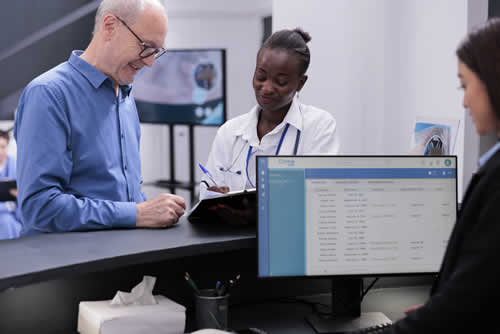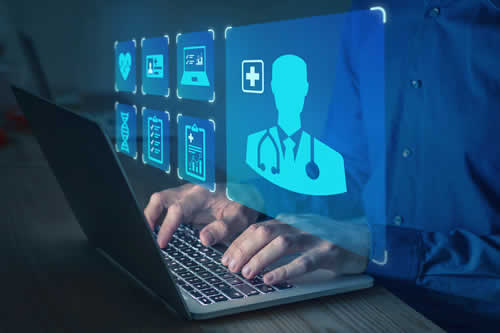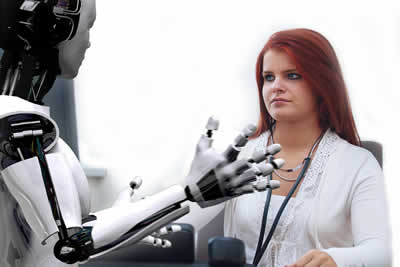Technology is, frankly, turning healthcare on its head ... in a good way! From cutting out inefficiencies to improving the care of patients, it's reshaping how providers operate. With the pressure to deliver solutions quickly, more safely and more effectively, these advancements couldn't have come at a better time.

Efficiency Gains
Administrative tasks have always been a drain on time and resources in healthcare. Technology changes that. Automation tools deal with scheduling, billing, and other routine processes. They reduce human error and free staff up so they can focus on patients.
Take
electronic health records (EHRs)—they centralize patient data, so it's a whole lot easier to access. Hospitals are also using smart inventory systems as a way of avoiding supply shortages. And with what are called interoperable systems “connecting the dots” between different platforms, providers are now able to work together without the level of friction that has been an unwelcome fixture in the past.
Rethinking Training with XR
Predictably, it has always been expensive to train healthcare professionals: it's slow and difficult to scale. But platforms like
Manage XR flip the script by using Extended Reality (XR) – which uses immersive learning for a much more efficient – and effective – way of developing skills.
Picture this: a medical student practices a surgical procedure in a virtual operating room: there's obviously no risk to real patients! And using a resource like Manage XR simplifies how hospitals employ and update XR devices, so that everyone gets the same high-quality training, no matter where the location is. This means that emergency teams, for example, can use XR to prepare for high-pressure situations, building the confidence and skills they need in their careers.
Streamlining Credentialing
Credentialing is the process of verifying a provider's qualifications: their education, training, and licenses to care for patients. And it's a safety check that's absolutely essential in healthcare, because managing this manually is usually a nightmare! Credentialing software automates tracking licenses, compliance requirements, and renewal dates, so everything is organized … and secure.

For large healthcare providers, this isn't just a time-saver - it's essential.
Healthcare credential software prevents things like compliance risks and makes sure that administrators have the data they need at their fingertips. The result? A much smoother process for everyone involved.
Improving Patient Care
Looking at the basics, healthcare is about patients, isn't it? Technology is improving outcomes in measurable ways. Real-time monitoring can be provided with wearable devices, and this gives doctors an early warning system for potential issues. With chronic conditions (think of diabetes) these tools are truly life-changing, and help patients to stay on top of their health.
Telehealth is another major leap forward. It provides much better access, especially for patients in remote areas. Virtual consultations save time, reduce hospital visits, and make care much more accessible. Meanwhile, patient portals give people direct access to their medical records, so they can even take charge of some elements of their health.
And then there's personalized medicine. Genetic testing and analytics have advanced to the extent that doctors can provide tailored treatments that address individual needs. This means that in many cases, things like “trial-and-error” care are no longer a problem.
Addressing Security and Privacy
The move to digital healthcare inevitably has some risks attached, especially with data security. With patient information becoming a prime target for cyber crime, protecting it is a top priority. As a response, encryption, multi-factor authentication, and compliance measures like HIPAA are used.
Blockchain is also, believe it or not, emerging as a solution, too, by offering tamper-proof records and controlled access for authorized users. As expertise continues to advance, everyone needs to stay proactive about security. It's non-negotiable…

The Bigger Picture
There are many inequalities in healthcare, and they remain a challenge. But technology is helping to close the gap. Mobile health apps and telehealth platforms provide care to neglected communities. And multilingual services are making these tools more inclusive, so that no one is left behind.
The push toward sustainability brings another win, too. Digital systems reduce paper wastage, and telehealth cuts down on patient travel, shrinking the associated carbon footprint.
What's Next?
Looking ahead, the possibilities are endless. AI is already transforming diagnostics. Hospitals can prepare for patient surges using predictive analytics. And 3D printing is revolutionizing prosthetics. Robotics is set to make care increasingly precise and efficient.
Technology isn't just reshaping healthcare - it's building a system that's faster, smarter, and more patient-focused. The real question is: how far can we take it?
Watch this space…



























